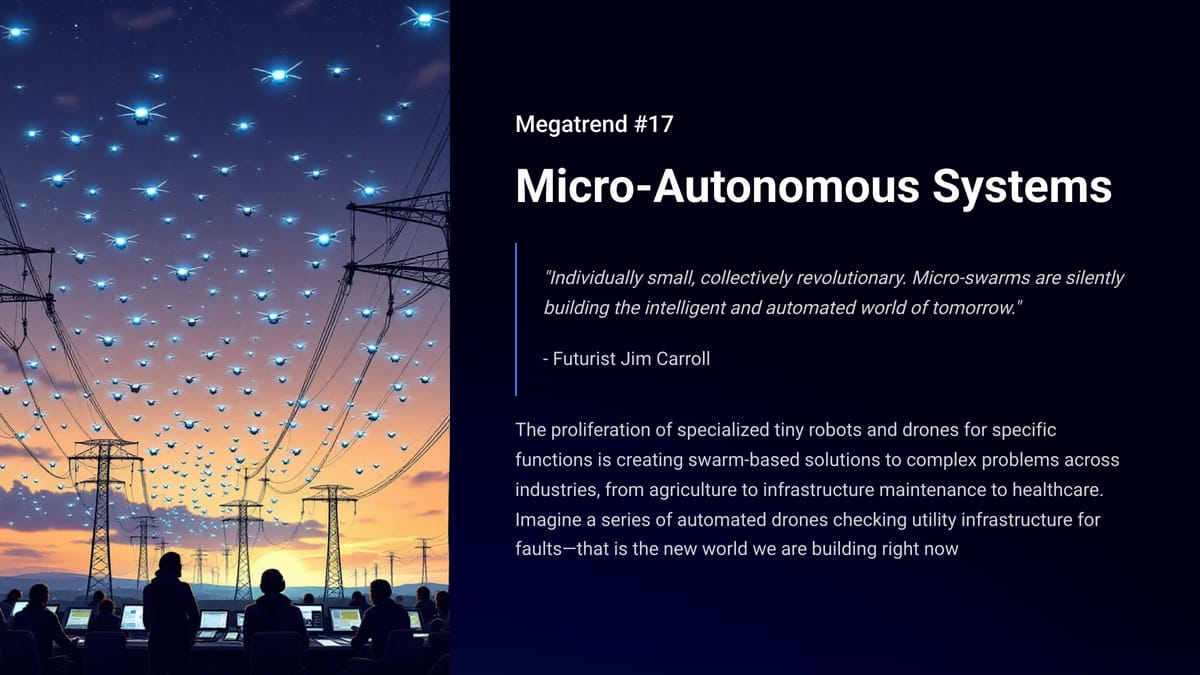"Individually small, collectively revolutionary. Micro-swarms are silently building the intelligent and automated world of tomorrow." - Futurist Jim Carroll
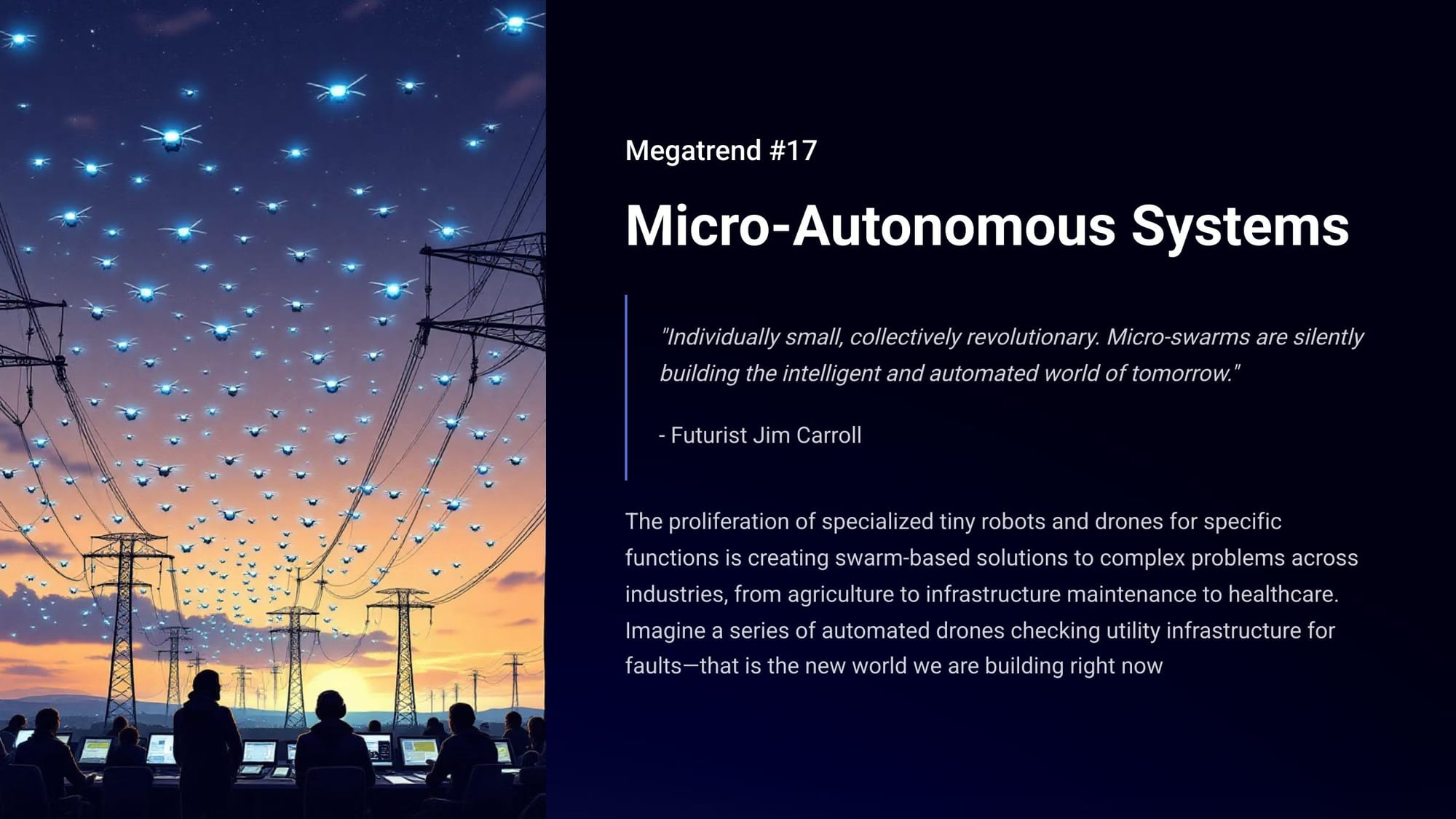
(Futurist Jim Carroll is writing a series on 30 Megatrends, which he first outlined in his book Dancing in the Rain: How Bold Leaders Grow Stronger in Stormy Times. The trends were shared in the book as a way of demonstrating that, despite any period of economic volatility, there is always long-term opportunity to be found. The book is now in print - learn more at dancing.jimcarroll.com)
The proliferation of specialized tiny robots and drones for specific functions is creating swarm-based solutions to complex problems across industries, from agriculture to infrastructure maintenance to healthcare. Imagine a series of automated drones checking utility infrastructure for faults—that is the new world we are building right now.
Let's call it "The Dawn of the Swarm" - here's your PDF. I could see some dramatic Star Wars-style theme music going with it!
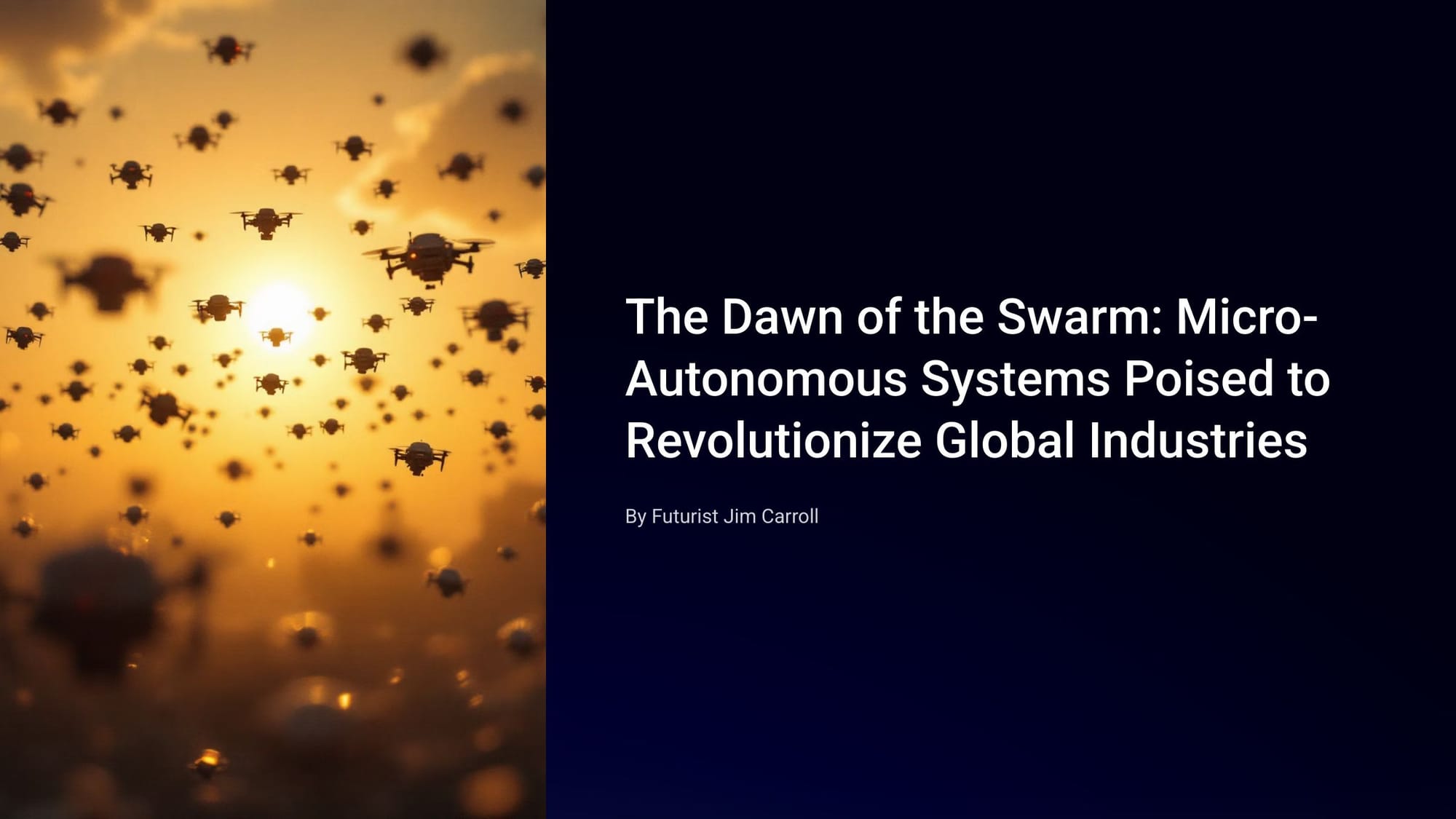
What's it all about? Tiny robots and drones operating in coordinated swarms, creating intelligent solutions to complex problems across sectors:
- Agriculture: Precision farming and crop monitoring
- Healthcare: Targeted drug delivery and medical logistics
- Infrastructure: Autonomous inspection and maintenance
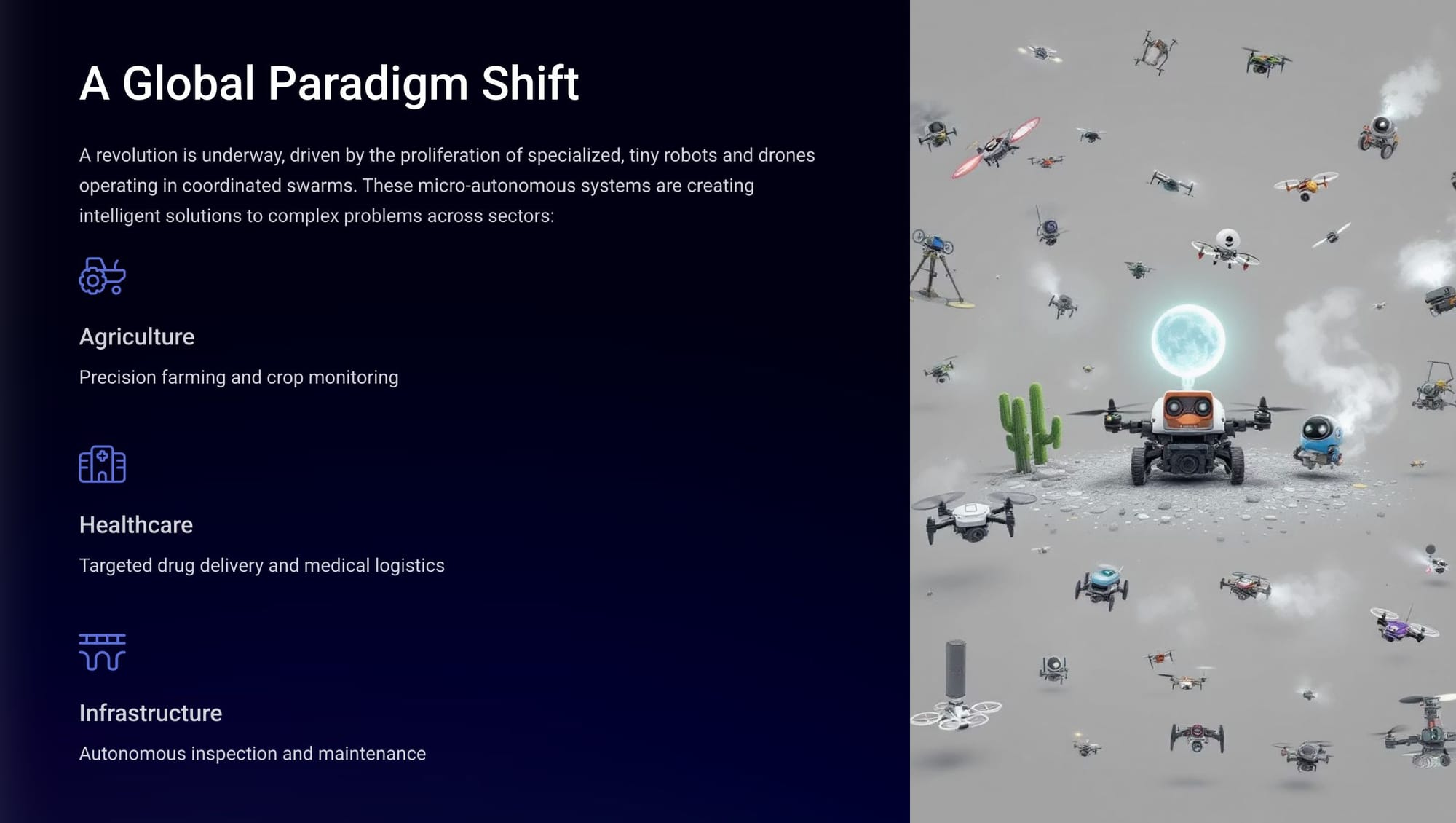
The idea is inspired by the collective behavior of social insects and birds. Known as "swarm intelligence", it provides the foundational algorithm for decentralized coordination and insight. Each autonomous agent (a drone or robot) operates based on local information and simple rules, but together, these systems become complex, intelligent group behavior, and coordinated insight emerges as they work together.
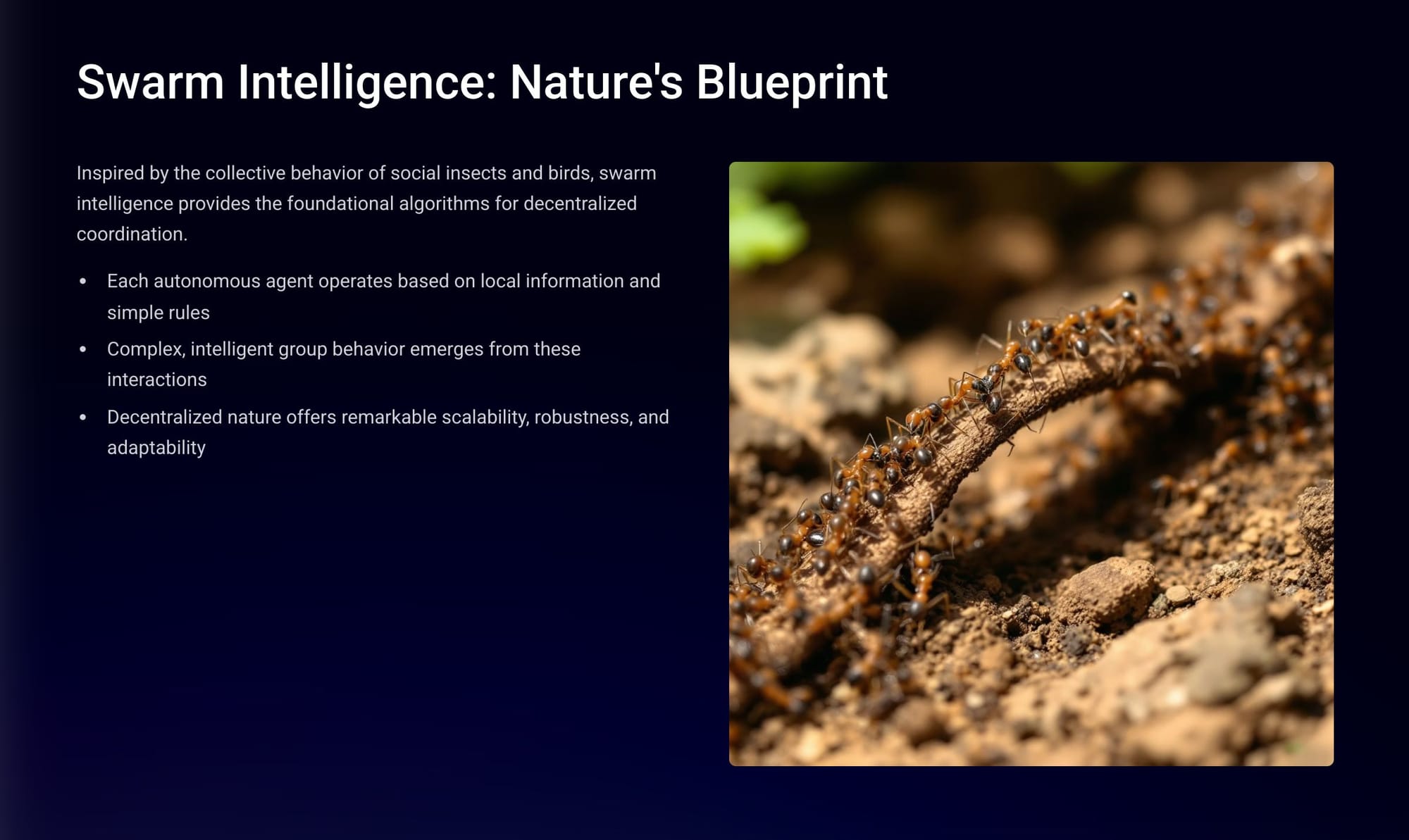
A lot of this trend comes from the power of miniaturization. Researchers and engineers are pushing the boundaries of what's possible, developing increasingly smaller yet more capable autonomous systems, involving:
- Advanced Sensors. Miniaturized LIDAR, hyperspectral cameras, and chemical sensors are being integrated into these tiny machines, granting them unprecedented perception capabilities.
- Novel Actuators. Innovations in piezoelectric and magnetic actuators are enabling precise and efficient movement in increasingly smaller form factors.
- Next-Generation Power. Breakthroughs in solid-state batteries and energy harvesting technologies are extending the operational endurance of micro-robots and drones.
- Robust Communication capabilities. Low-power, ad-hoc communication protocols ensure seamless information exchange within the swarm, even in complex environments.
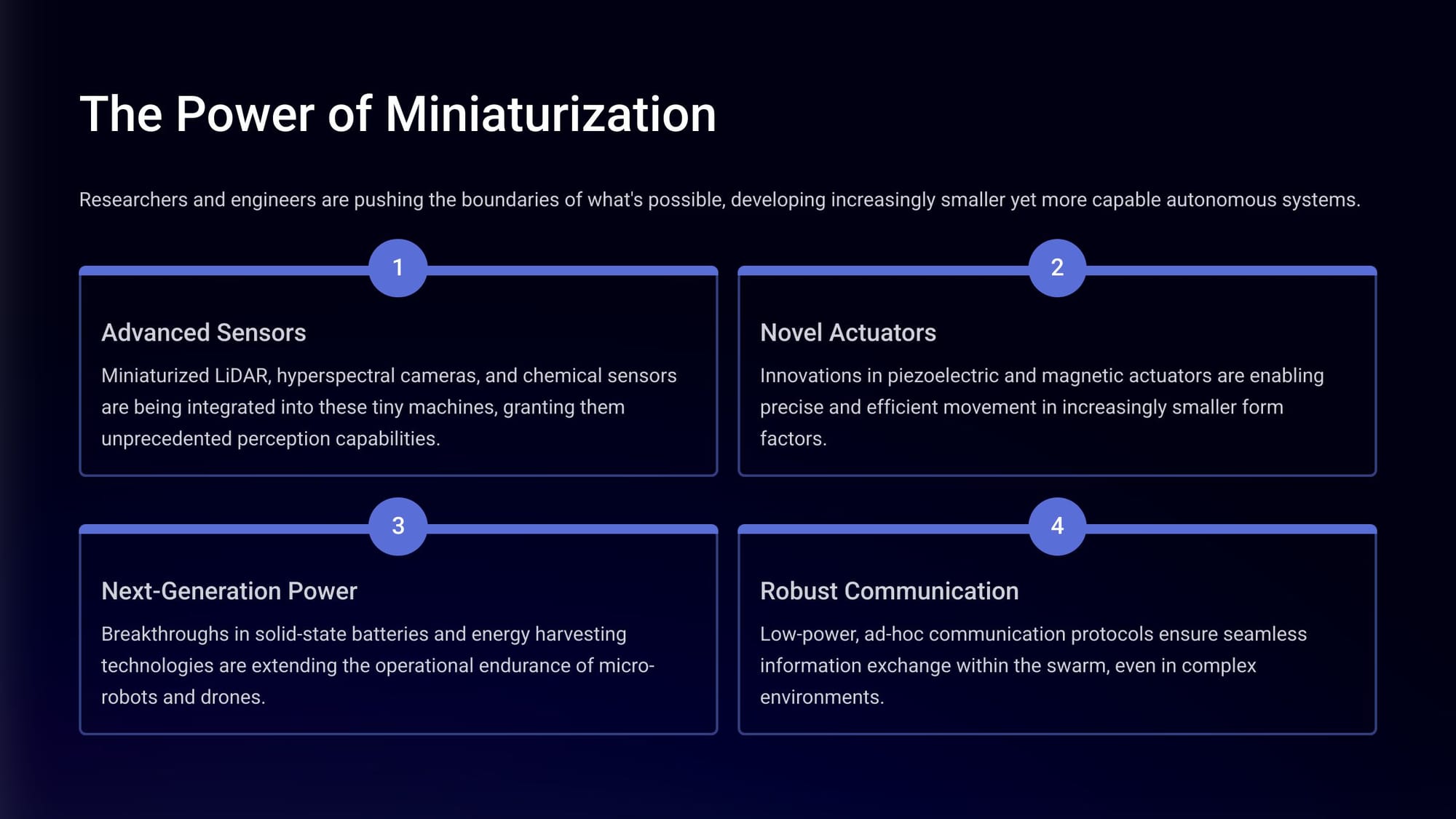
The researchers developing these systems are focused on the idea of 'biomimicry,' so that they can learn from nature. Swarm designs are inspired by insects and other small creatures, leading to more agile and efficient solutions. After all, nature is good at swarm thinking - so why not do what it does! These nature-inspired designs enable micro-robots to navigate complex terrains, fly with remarkable efficiency, and perform tasks with precision that would be impossible with conventional engineering approaches.
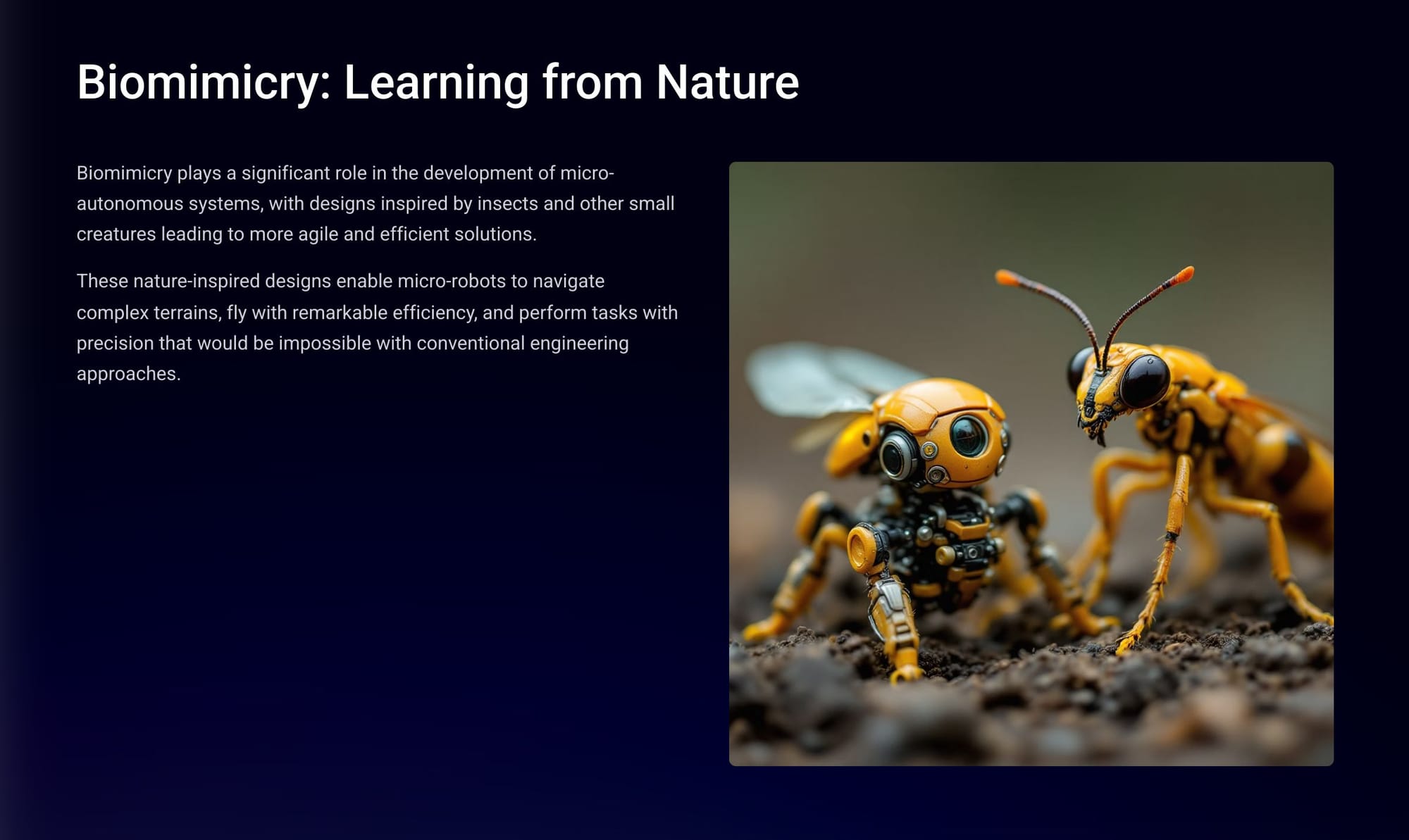
So, what are the examples of how it can and will be used? Let's take it apart.
In agriculture, we are speaking of "Per-Plant Precision." Agricultural technology companies are looking into pioneering the use of swarms of small, autonomous robots for:
- Precision weeding at the individual plant level
- Targeted pesticide application, reducing chemical usage
- Continuous plant health monitoring
This "per-plant farming" approach promises to significantly increase crop yields, reduce environmental impact, and enhance food security.
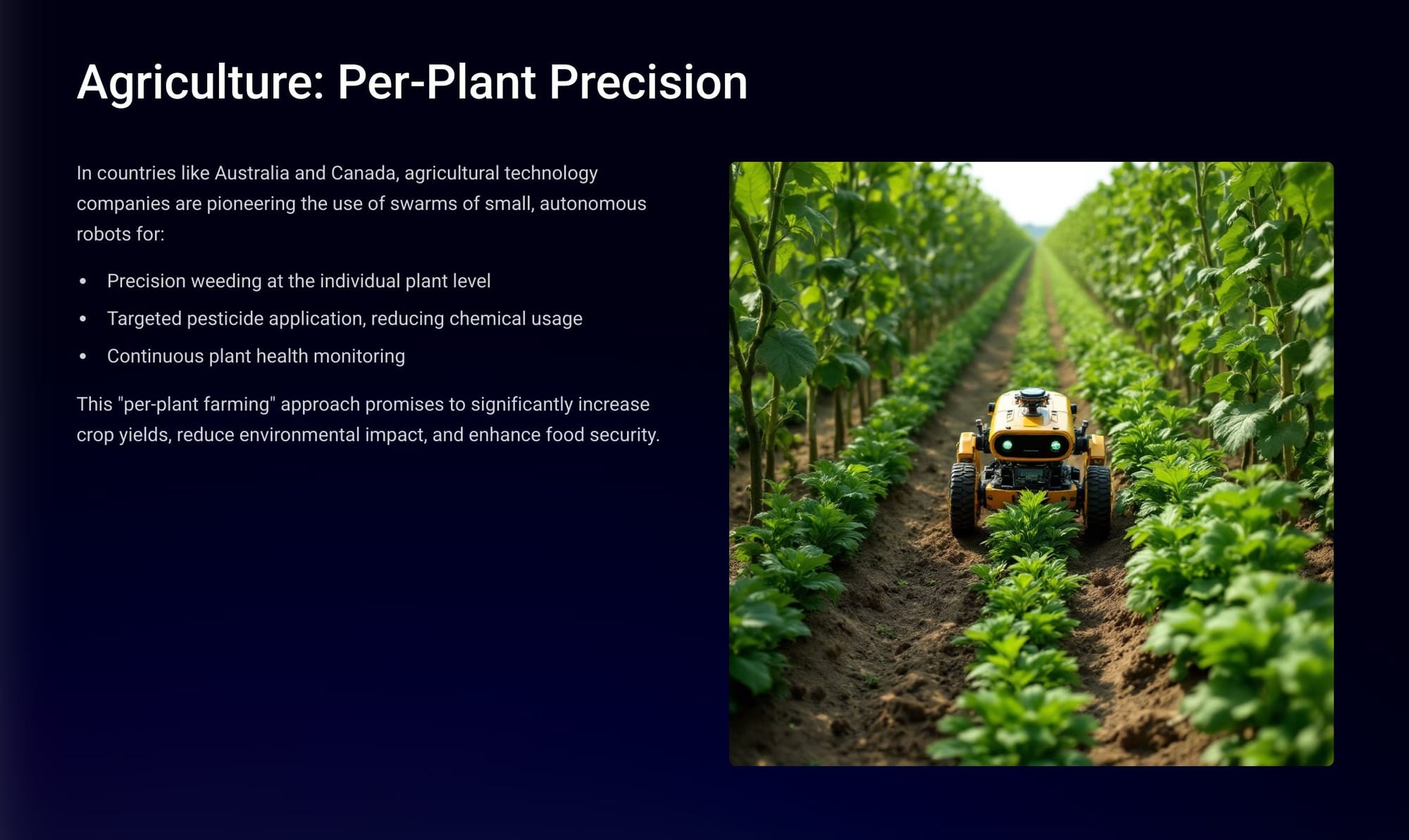
In the field of infrastructure maintenance, we are on the verge of an "Inspection Revolution," with such things as:
- Bridge Inspection. Autonomous drones detect structural weaknesses without disrupting traffic.
- Pipeline Monitoring. In Japan, micro-robots navigate and inspect aging water and gas pipelines from the inside.
- Wind Turbine Maintenance. European nations deploy swarms to inspect towering turbines in the North Sea.
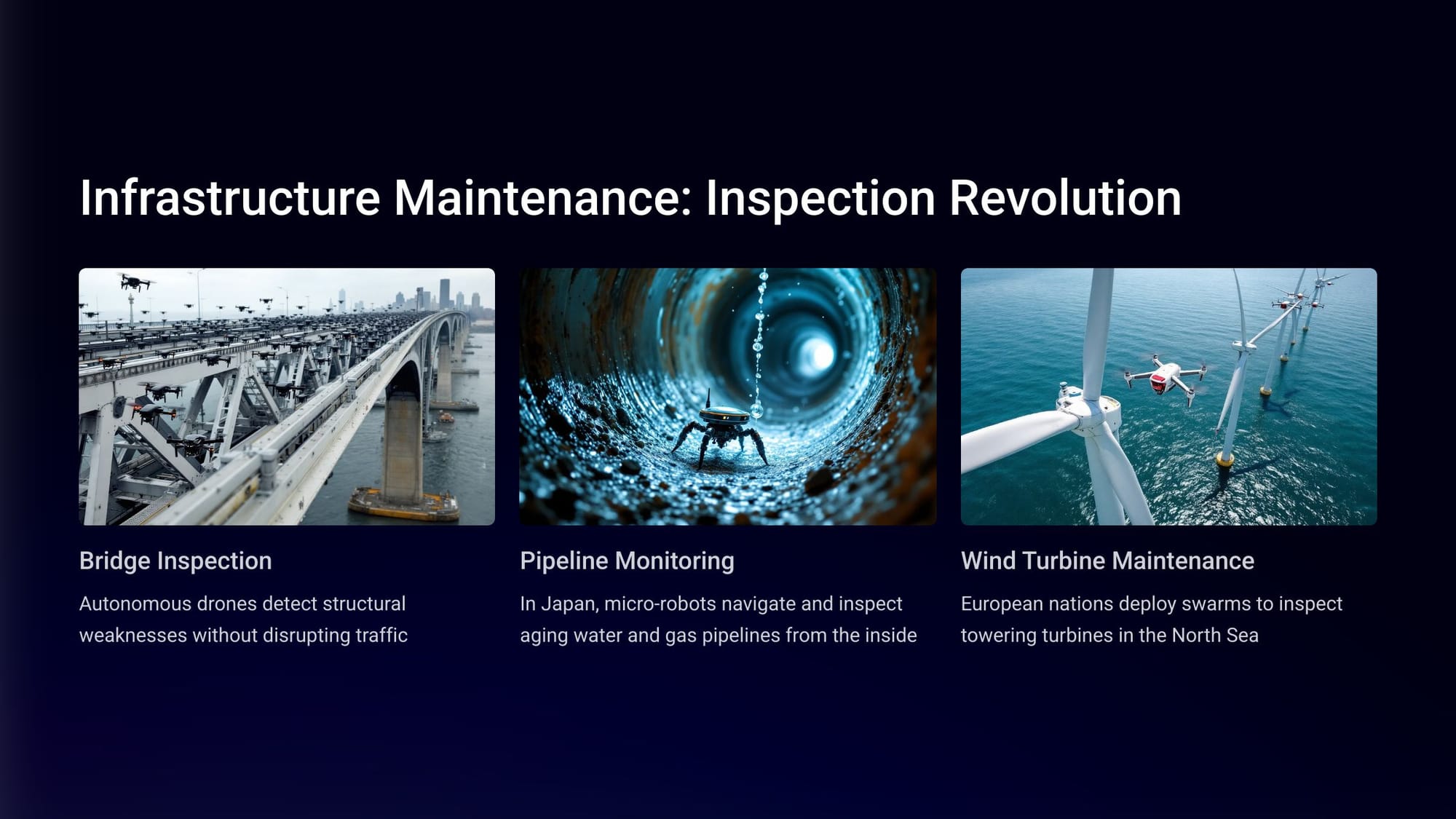
In healthcare, it's the "Micro-Robotics Revolution," with research institutions in the United States, Switzerland, and Israel developing groundbreaking applications:
- Biocompatible micro-robots for targeted drug delivery within the human body
- Revolutionary cancer treatments with minimized side effects
- Micro-drones for rapid delivery of medical supplies to remote areas
- Transport of diagnostic samples in disaster-stricken regions of Africa and Southeast Asia
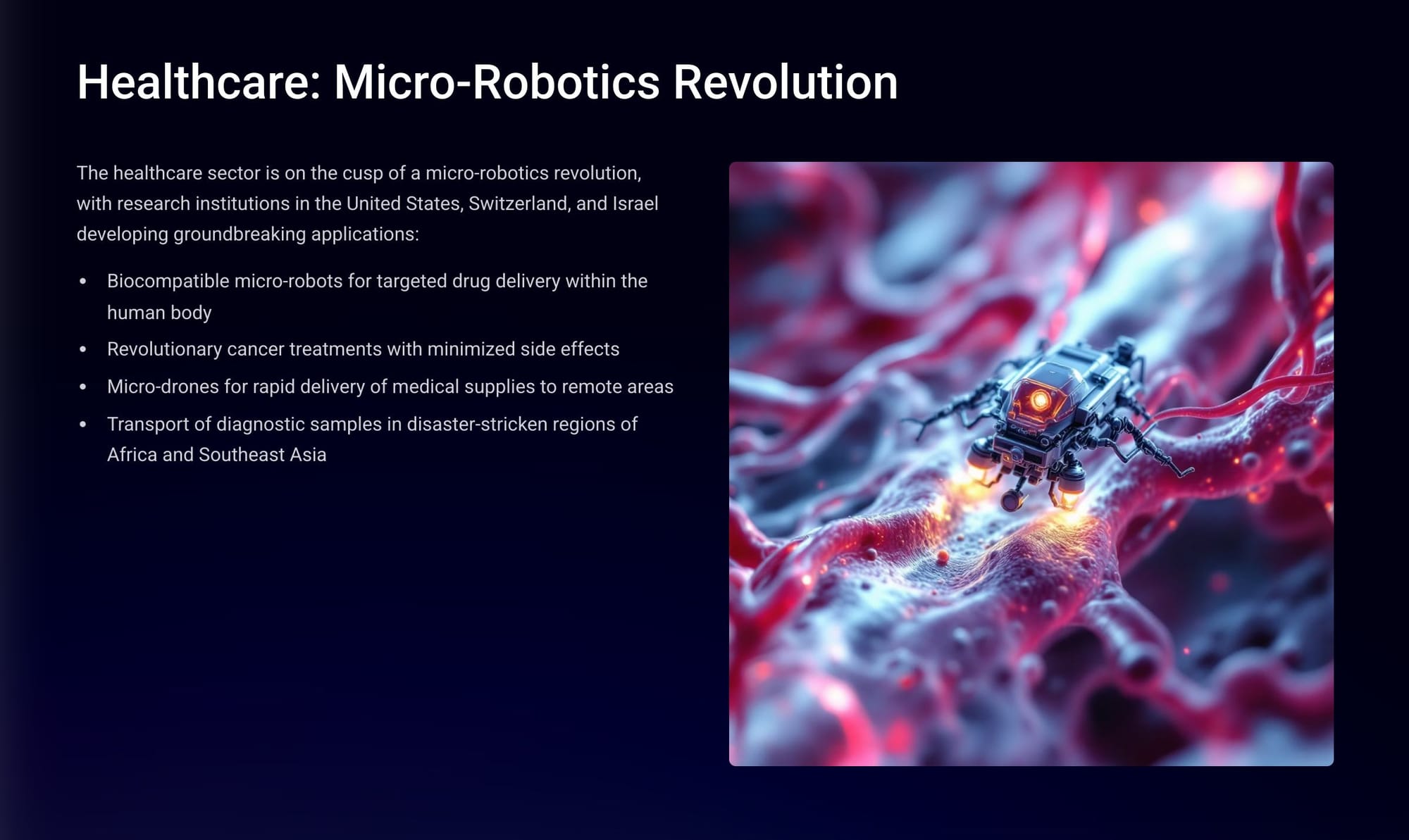
And the idea shines in environmental monitoring. Swarms of micro-drones and aquatic micro-robots will be deployed globally to monitor a range of environmental indicators:
- Air Quality. Real-time tracking of pollution levels and particulate matter across urban environments.
- Water Systems. Continuous monitoring of rivers, lakes, and coastal waters for contaminants.
- Ecosystems. Assessing the health of coral reefs and tracking the impact of climate change on remote habitats.
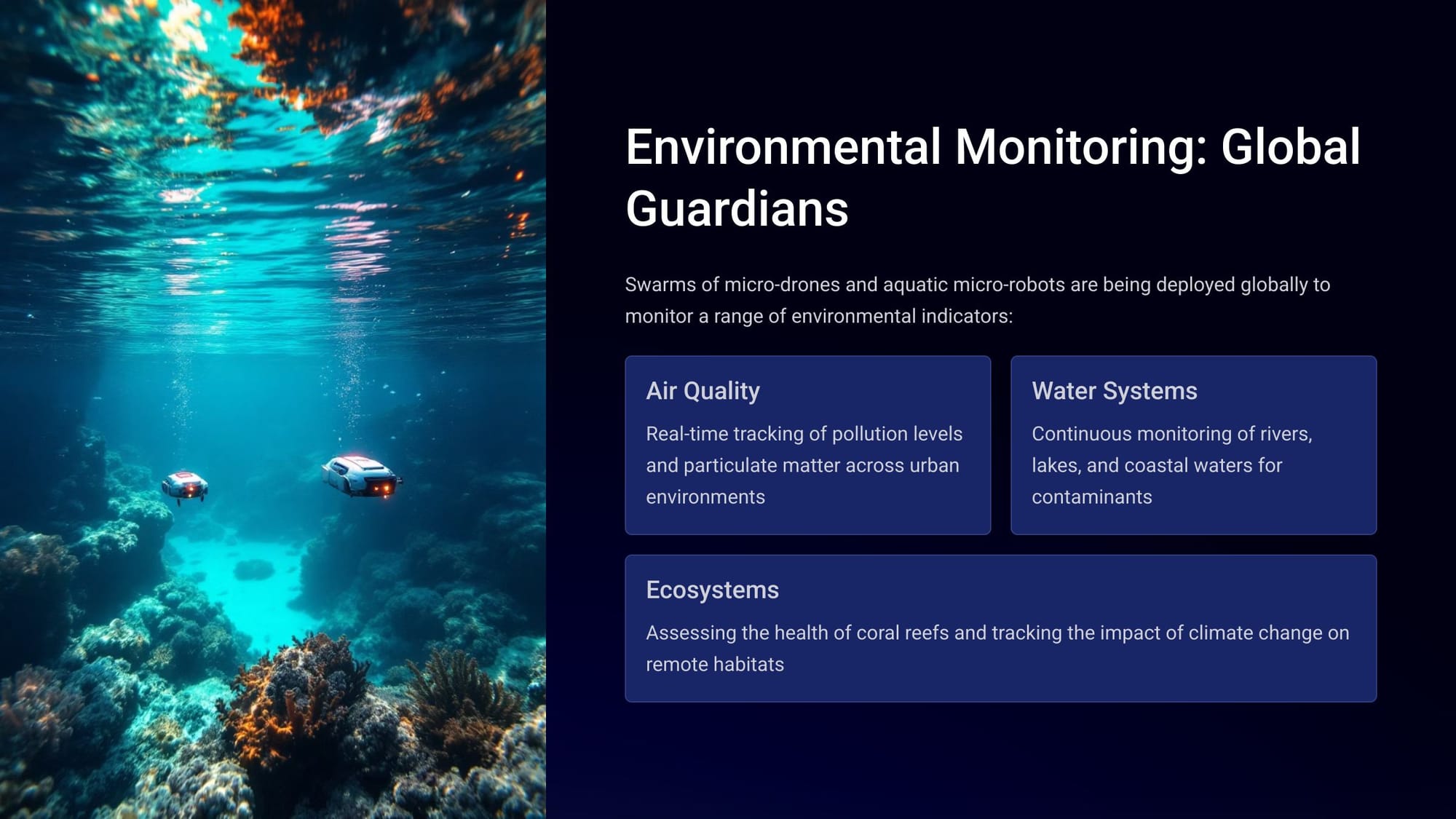
It doesn't stop there. Researchers are developing swarms that can physically connect and reconfigure themselves to adapt to different tasks:
- Forming bridges to cross gaps
- Assembling larger tools to manipulate objects
- Creating temporary structures for emergencies
- Adapting their collective shape to navigate complex environments
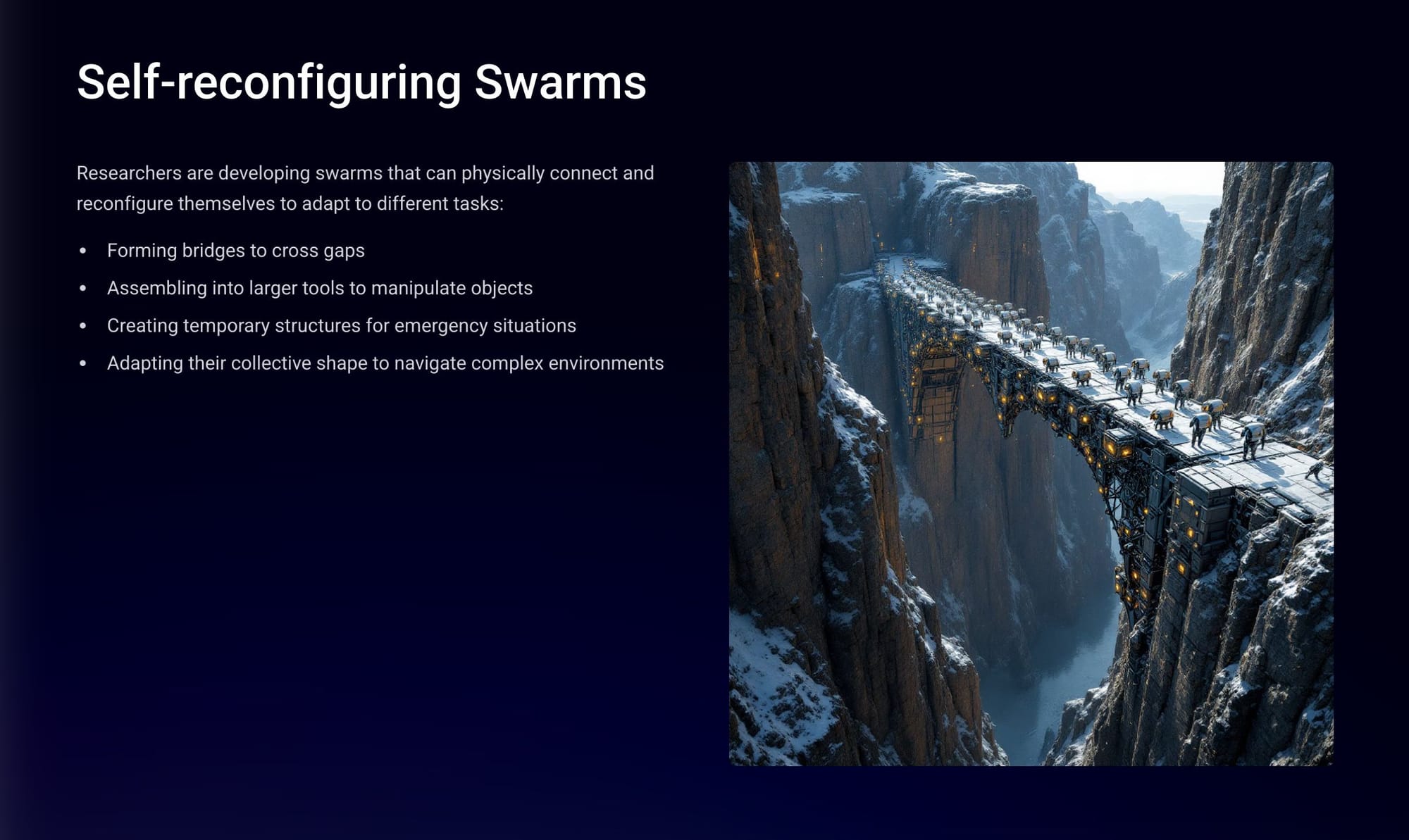
All of this might seem crazy, but remember, someone else's crazy right now is someone else's innovation project today.
When you dig into the megatrend further, you find people talking of "Bio-hybrid Robots," which merge life and technology.
Scientists are exploring integrating living muscle tissue with synthetic components to create highly efficient and agile micro-robots - part living, part tech. These bio-hybrid systems leverage the natural efficiency of biological systems while maintaining the programmability of robotics, potentially revolutionizing applications requiring delicate manipulation or sustained movement. Imaginary ideas could become real!
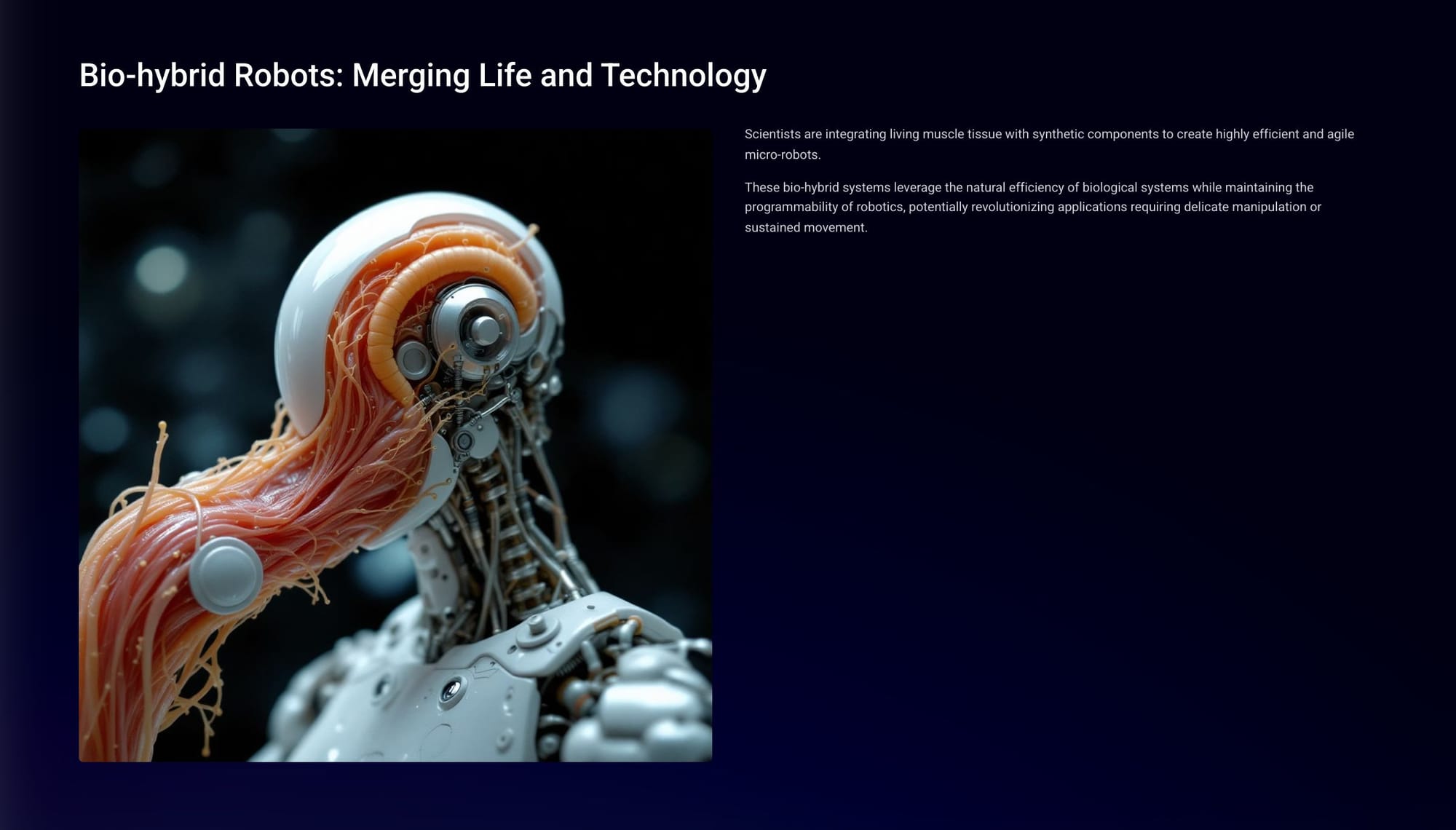
New ideas don't stop there. They are exploring the idea of swarms that can collectively harvest energy from their environment, promising perpetual operation without the need for recharging. Think about what they are thinking about!
- Solar Harvesting: Micro-robots with integrated photovoltaic cells can operate indefinitely in daylight conditions.
- Vibrational Energy: Converting ambient vibrations into usable power through piezoelectric materials.
- Thermal Gradients: Harvesting energy from temperature differences in the environment.
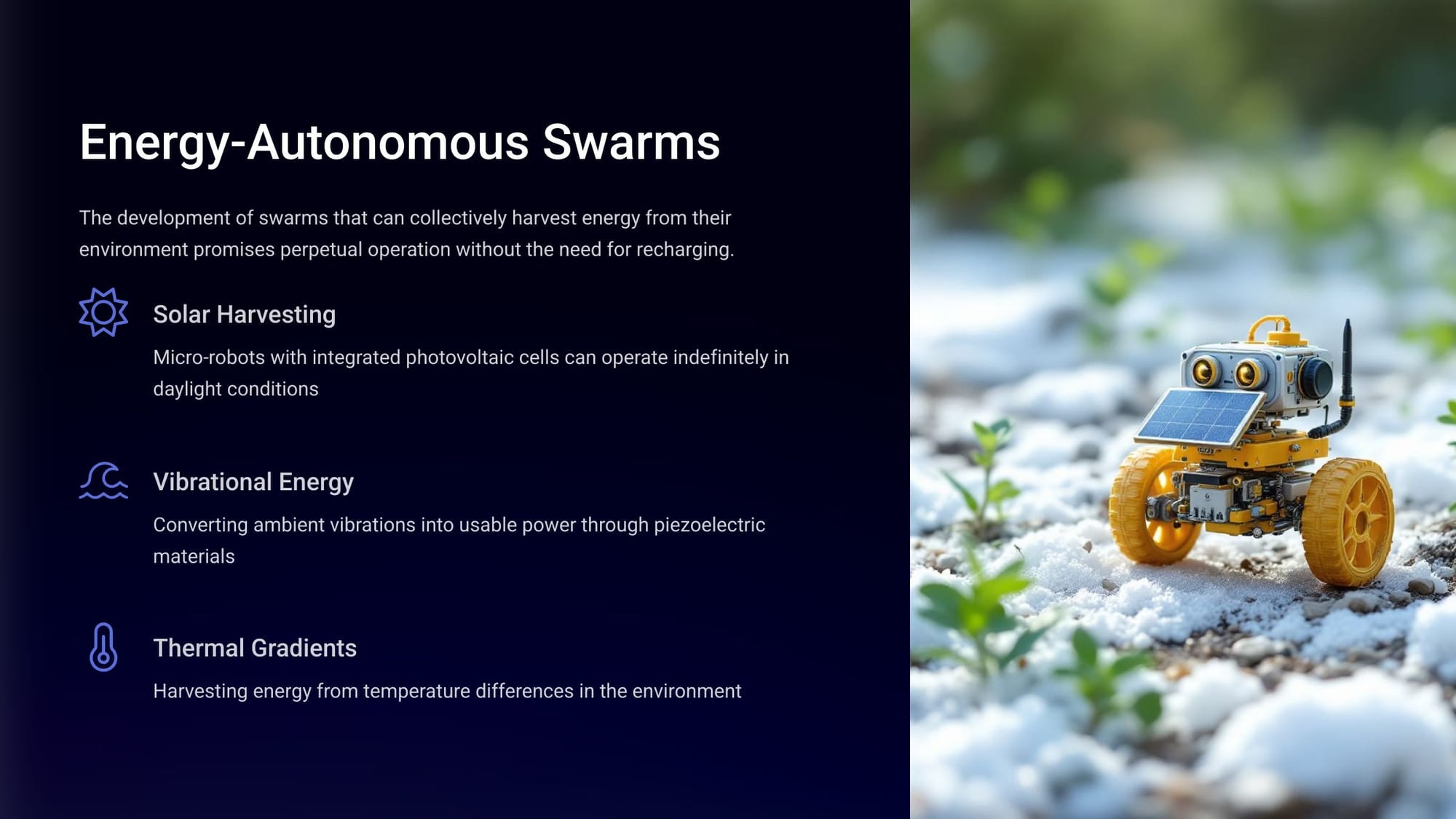
The key to making all this work is the idea of collective learning and swarm intelligence. All these little devices collect a lot of data, do a lot of communication, and do a lot of coordination. That's where, of course, AI comes in. Advancements in artificial intelligence will enable swarms to learn from their collective experiences and improve their performance over time without human intervention. This leads to:
- Distributed learning across multiple agents
- Sharing of knowledge between swarm members
- Adaptation to new environments and tasks
- Continuous improvement through collective experience
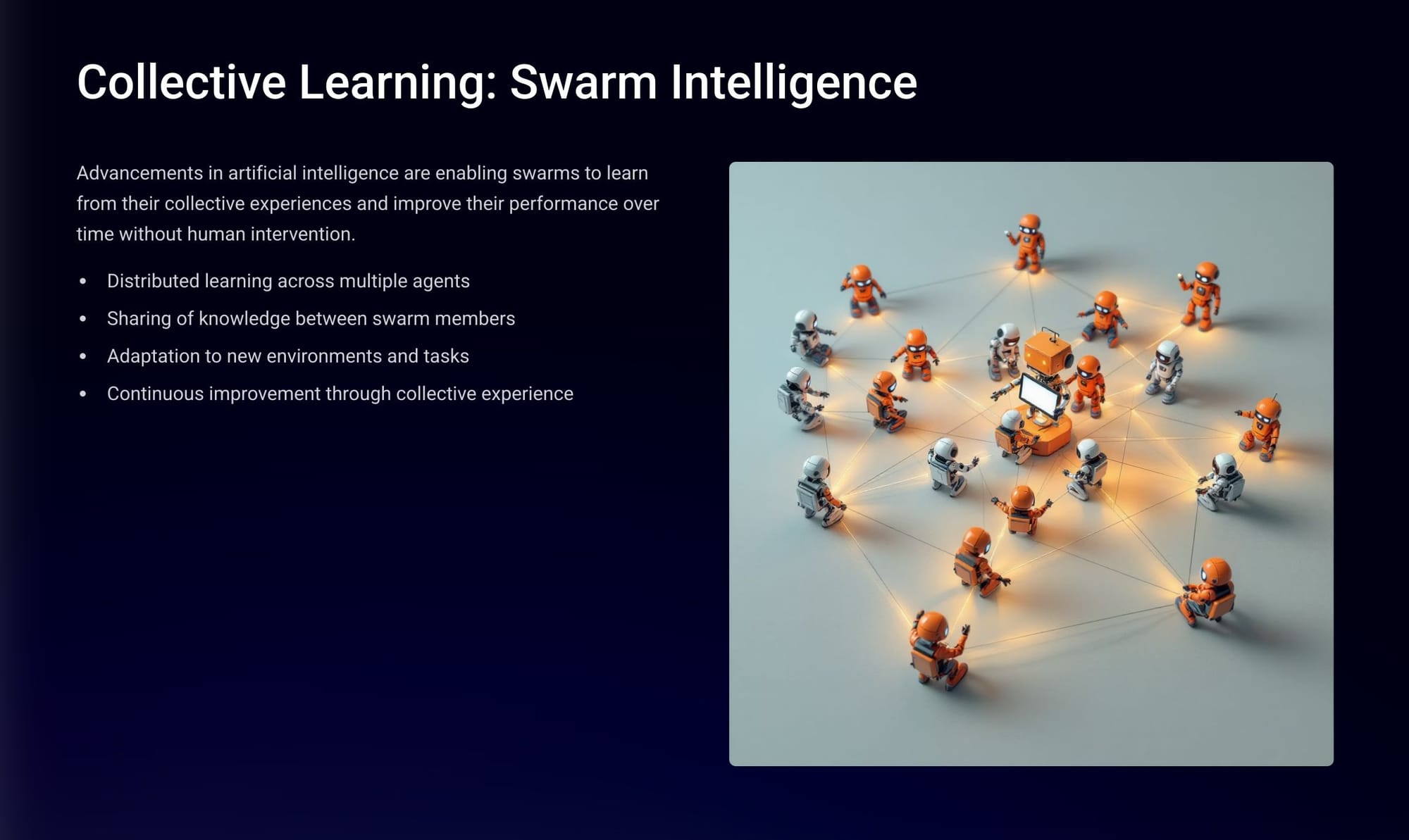
So what's the timeline? Who knows - there's a lot of research going on. That said, some guess this could be the pathway:
2025-2028: Early Adoption and Proliferation
- 2025: Industrial Inspection. Drone swarms become a standard tool for the inspection of energy infrastructure, transportation networks, and large-scale construction projects.
- 2026: Precision Agriculture. Small and medium-sized farms begin to adopt swarm-based solutions for crop monitoring and targeted treatments.
- 2027: Logistics Revolution. Swarms of autonomous mobile robots become commonplace in large distribution centers, optimizing inventory management and order fulfillment.
- 2028: Urban Medical Delivery.
- Following successful trials in remote areas, we see pilot programs for medical deliveries using drone swarms in cities.
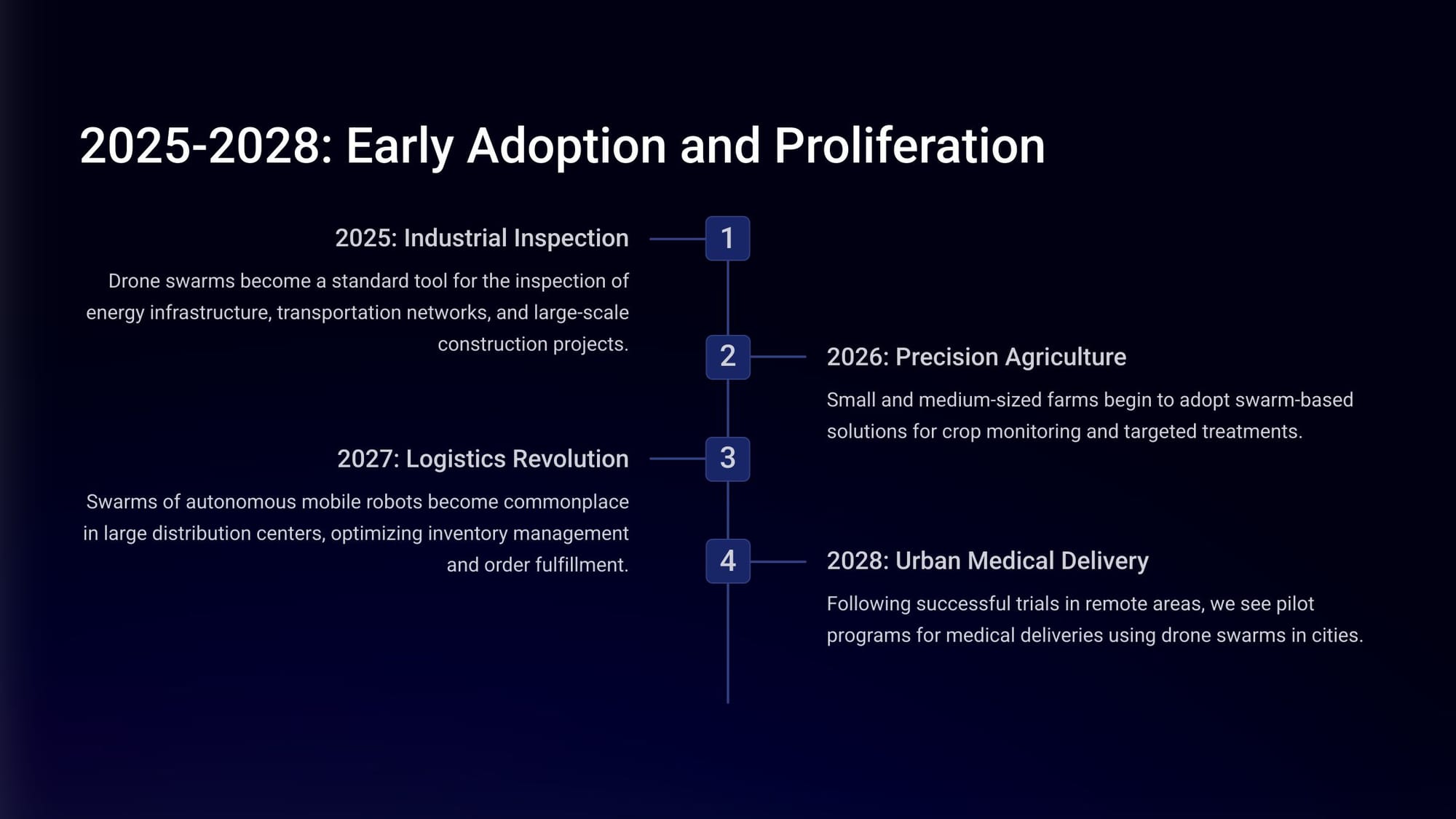
To me, that seems aggressive, but it is indicative of the bold thinking that is out there.
2029-2032 is the "Maturation and Integration" phase:
- Increased Autonomy and Self-sufficiency. Swarms will be able to operate for extended periods with minimal human oversight, performing complex tasks and adapting to unforeseen circumstances.
- Integration with Emerging Technologies. Micro-autonomous systems will be seamlessly integrated with the Internet of Things (IoT), 5G networks, and artificial intelligence platforms.
- First In-human Trials. Following extensive preclinical testing, the first clinical trials of micro-robots for targeted drug delivery are expected to begin.
- Environmental Monitoring Networks. Swarms will be used for continuous and comprehensive monitoring of entire ecosystems.
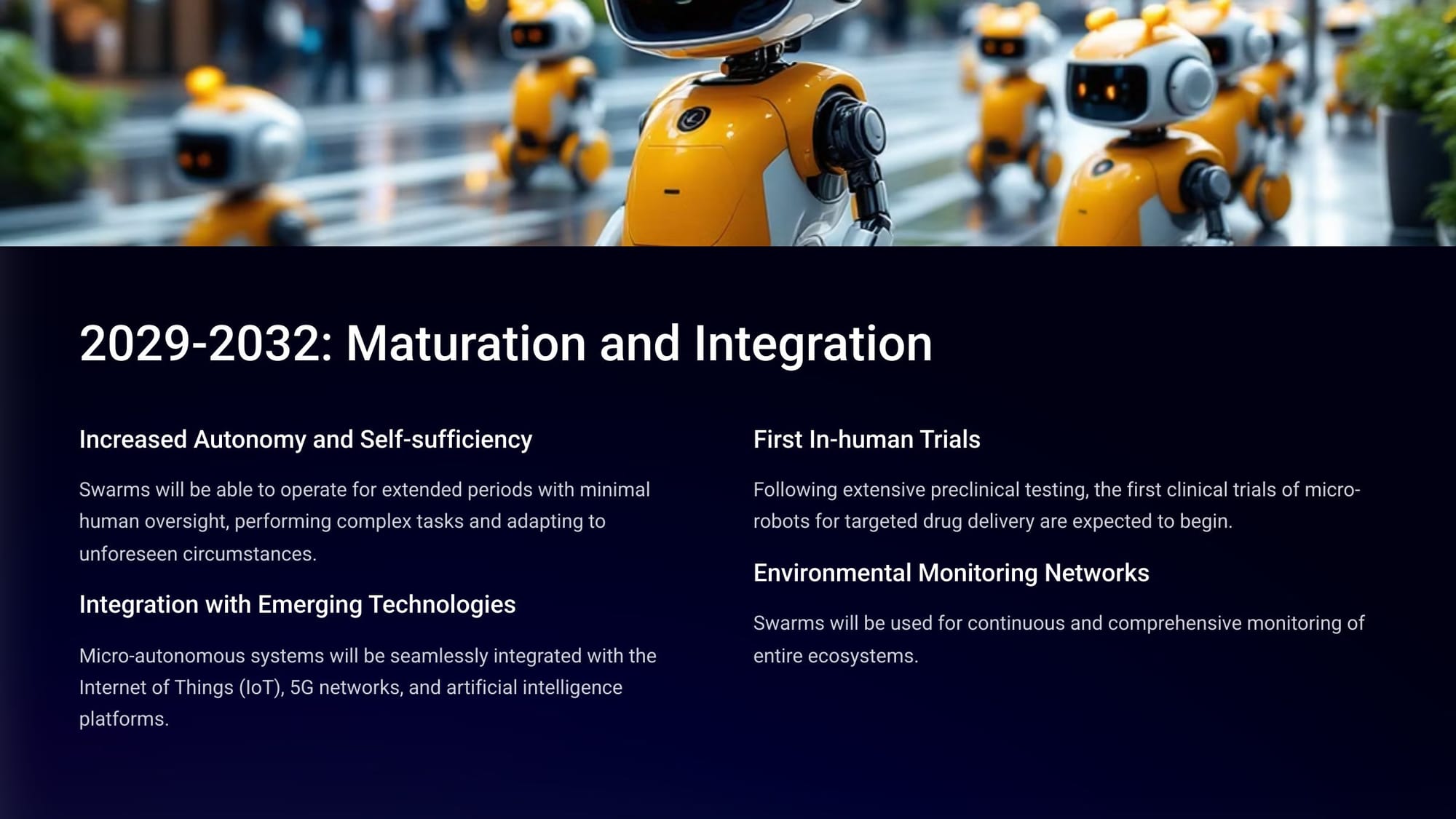
And 2033-2035 will see their "Ubiquitous and Transformative Impact" across industries:
- MAS-as-a-Service. Businesses will be able to subscribe to on-demand swarm services for a wide range of applications.
- Emergency Response. Swarms of drones and robots will be the first responders in disaster zones, providing real-time situational awareness.
- Personalized Medicine. Micro-robots will enable highly personalized and targeted therapies, fundamentally changing disease treatment.
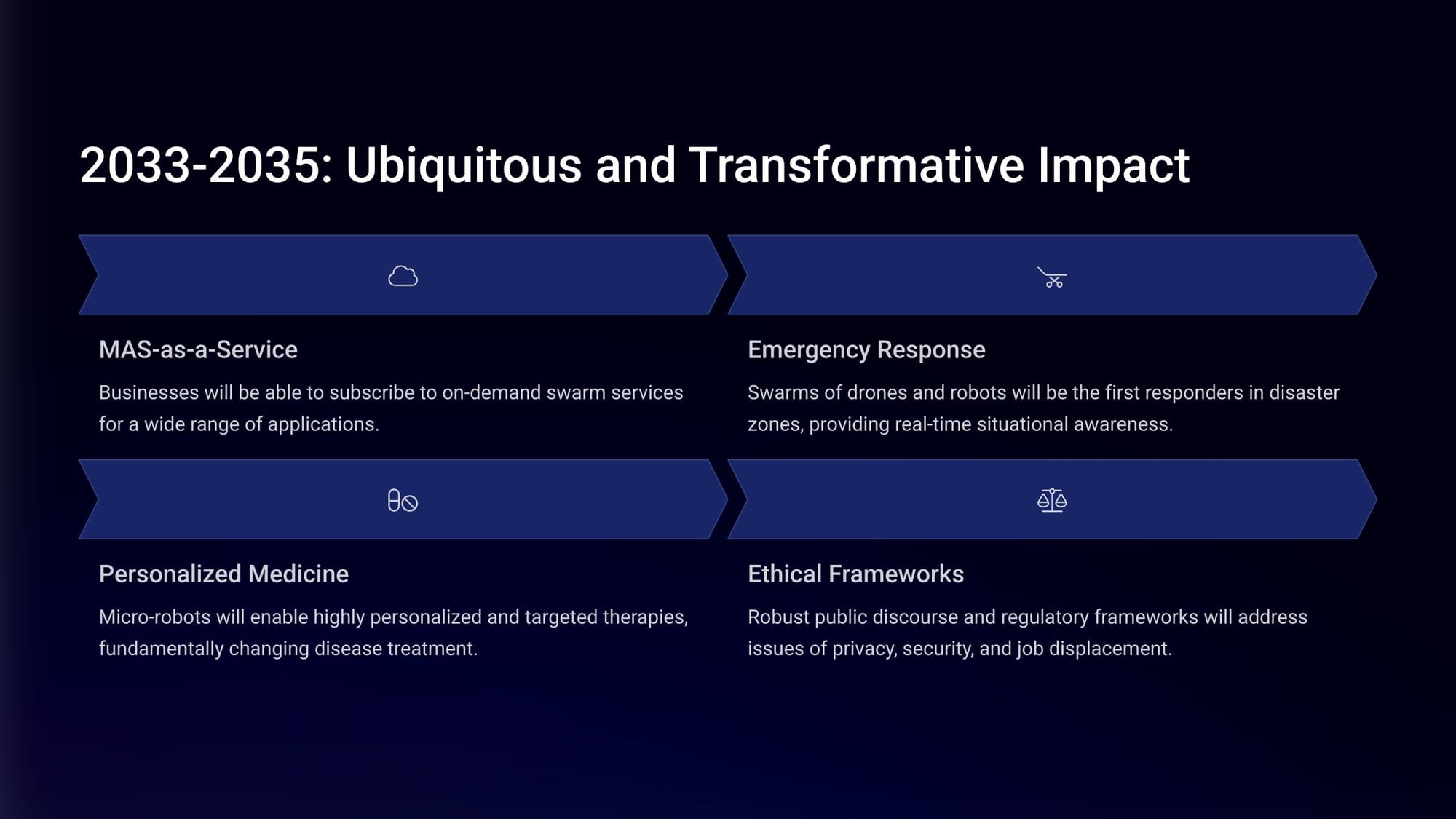
An aggressive timeline? No doubt, but there is also no doubt that he world we are building is one where the collective power of the small will solve some of our biggest challenges.
The proliferation of micro-autonomous systems is not just a technological trend; it is the dawn of a new era of intelligent, distributed, and swarm-based solutions that will reshape our world in the years to come.
Cue the Star Wars theme music!
Futurist Jim Carroll believes that swarm technology is one of the least followed but most significant megatrends of our time.

